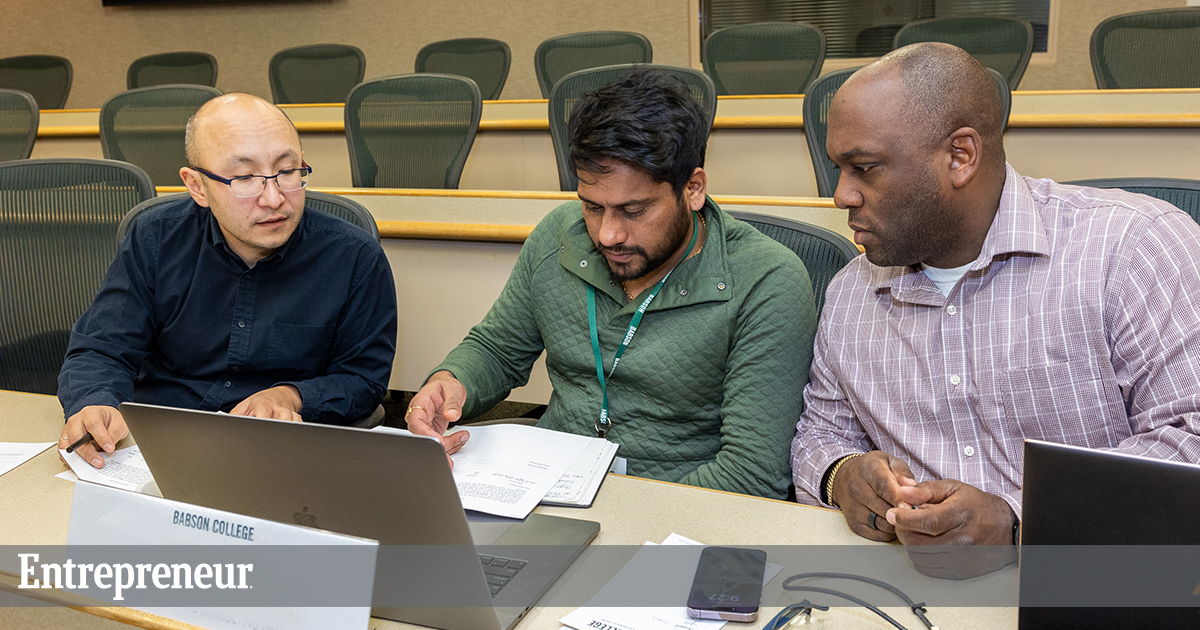Want to Boost Your Company’s Growth? Upskill Your Workforce. Here’s How.

For businesses to grow, so must their employees’ skills. That’s why so many organizations seek to create structured learning opportunities for their leaders and team members. A survey from UNICON, a consortium for university-based executive education, found that after shrinking early in the pandemic, the executive education market grew 34% between 2021 and 2022.
Editor’s note: This article first appeared in Entrepreneur magazine.
After many years of working on leadership development initiatives at Babson College, Harvard Business School, and Worcester Polytechnic Institute, I have experienced the value and impact of corporate training in organizations. It can help companies in crises respond to market threats and push well-established companies to think more creatively.
Here are three tips for how your organization can take full advantage of corporate training and executive education.
Tip #1: Don’t just teach executives — instead, deploy a cascading approach

“Executive” education’s name concedes what most programs focus on: a small group of senior leaders. Because executive education programs have finite faculty and corporate clients have limited time and resources, many engagements end up being overly narrow.
The value of education doesn’t come only from new concepts participants are taught. It relies heavily on network effects. Benefits really start to kick in when many people know about and can collectively implement the tools they have just learned. Otherwise, it’s like there’s a great show on television that only a few people at an organization watch. The rest of the team may catch snippets of what’s going on, but important plot points and key ideas get lost.
Corporate training should strive to reach as many people in an organization as possible. That doesn’t mean spending the same amount of time with each group or talking about the same things. Training programs should be customized for a company’s business model as well as the different needs of groups of employees.
In one recent program with a large company, we started with intense sessions for a senior leadership team of 11 people. After receiving buy-in from top executives, we moved on to a modified program for 70 vice presidents. Then 300 directors. Then thousands of associates. This cascading approach to education ensured everyone in the organization was on the same page and we were maximizing the network effects of learning.
Don’t restrict executive education to executives. Employees learn best and organizations perform best when everyone shares an understanding of new skills and ways of thinking.
Tip #2: Offer ongoing resources
Conducting a one-off training is like going for a run. It’s a challenge that’s good for you and leaves you feeling energized, even if it first feels like a distraction from the things you really need to get done. But just as the benefits of exercise accrue when you make movement a habit, the positive effects of education amplify when learning is a repeated process.
Too often, corporate training is treated like a one-time miracle cure rather than an ongoing regimen. Part of the difficulty is limited time. Everyone is busy. It’s hard enough to gather a group of employees for an internal meeting, much less a dedicated professional development event. But we must make time for things that are really important, and training is one of those. Learning is mission-critical, not a fringe to-do item.
One solution you can embrace is online learning, which enables flexibility and the opportunity to keep employees engaged between bigger, in-person sessions. Concepts from previous sessions can be reinforced, and new lessons can be distributed instantaneously. As part of your training program, consider distributing on-demand resources that can be accessed at any time.
Tip #3: Emphasize long-term skills
Every company has a proactive mission that it pursues as markets shift and new technologies emerge. Organizations must lean into change, not shy away from it. There’s a difference, however, between embracing a transformative moment and being swept along by a trend.
For example, rushing into training on generative AI without a firm sense of what problems you’re trying to solve is like swinging a bat without a piñata in sight. As with any other disruption a company faces, AI remains an important part of the conversation. But ultimately, education on new trends must be paired with flexible frameworks that apply to multiple situations, as well as higher-level analysis of a company’s problems and goals.
As you provide opportunities for employees to learn, make sure you’re not being overly swayed by the flavor of the day. Remember there’s a reason education often focuses on big-picture skills that outlast any one trend.
The Importance of Professional Development
Professional development can do so much for employees and organizations. It can equip teams with basic skills and strategic frameworks. It can empower workers to solve existing problems and pivot when new ones arise. It can pave the path for a company to stave off stagnation and embrace innovation.
To secure these wins, corporate training needs to span across the organization. It needs to be consistent. And it needs to combine attention to short-term developments with emphasis on the long-term mission.
Stephen Flavin is the executive director of Babson College’s executive education program. He has worked in the executive education and corporate training industry for more than 25 years.
Posted in Entrepreneurial Leadership, Insights





